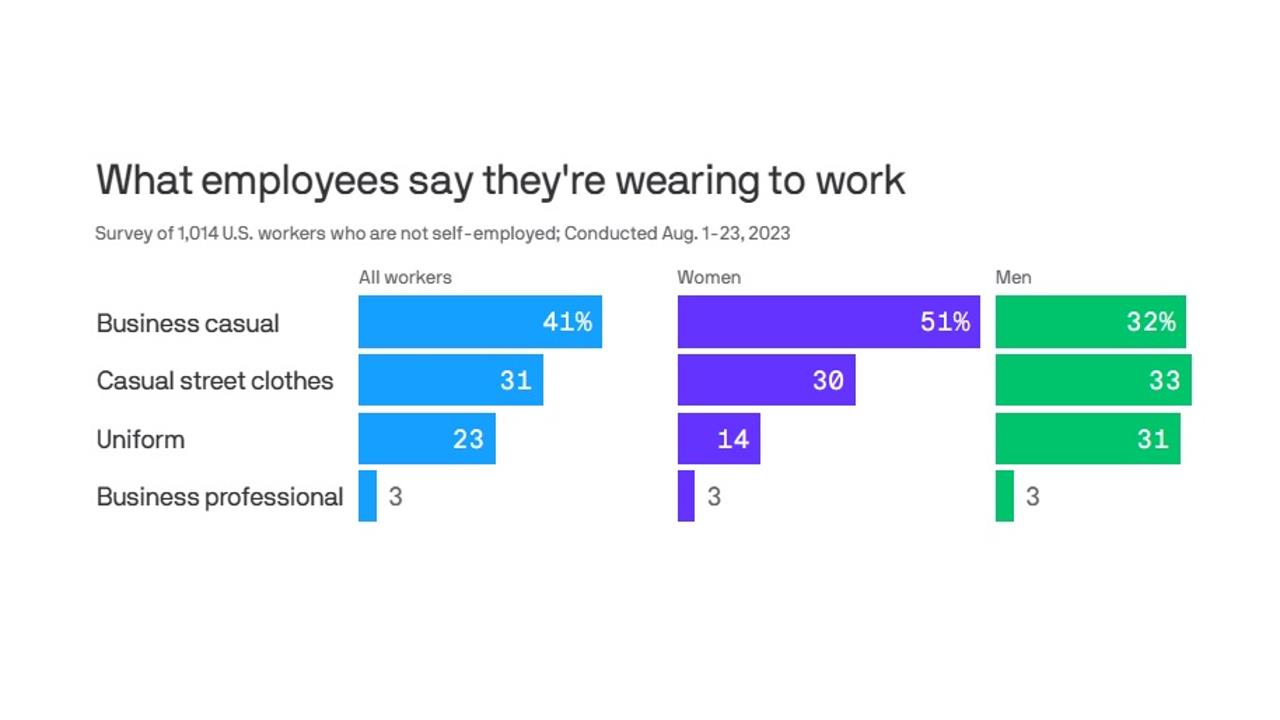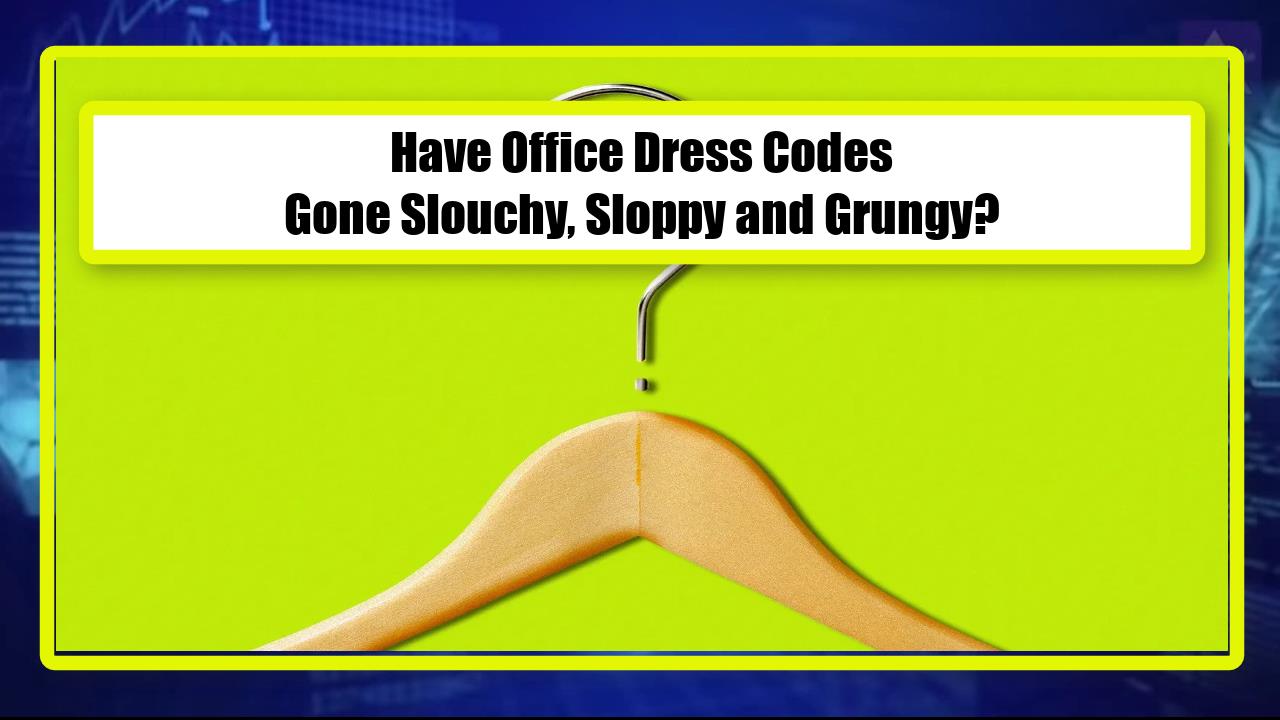Video:
Take our online poll:
AI Analysis:
The future of business dress is likely to continue evolving in response to changing societal norms, technological advancements, and workplace trends. While I cannot predict specific fashion trends beyond my last knowledge update in September 2021, I can offer some insights into general trends and factors that may influence the future of business attire:
1) Casualization of the Workplace: The trend toward more casual dress codes in the workplace has been ongoing for several years. This shift is driven by a desire for comfort, increased flexibility, and the rise of tech startups and creative industries where formal attire is less common. The COVID-19 pandemic also accelerated the acceptance of casual and remote work attire.
2) Hybrid Work Environments: With the rise of remote and hybrid work arrangements, employees may continue to prioritize comfort and functionality over traditional business attire. Business casual and smart-casual dress codes are likely to persist, with a focus on versatile clothing that can transition between home and office.
3) Sustainability: As environmental concerns become more prominent, there may be a growing emphasis on sustainable and ethically produced clothing in business attire. This could lead to a shift away from fast fashion and disposable clothing toward durable, eco-friendly options.
4) Technology Integration: Smart clothing and wearables may become more integrated into business attire, allowing for features like temperature control, fitness tracking, and communication capabilities. This could create a new category of tech-enhanced business attire.
5) Individual Expression: The future of business dress may place a greater emphasis on individual expression and personal style. Companies may adopt more flexible dress codes that allow employees to showcase their unique fashion preferences, within certain boundaries.
6) Gender-Neutral and Inclusive Attire: Expectations around gender-specific dress codes may continue to evolve, with a move toward more gender-neutral and inclusive options in business attire. This could include unisex clothing designs and a broader acceptance of diverse styles.
7) Cultural Influences: Business attire may be influenced by global and cultural trends, as workplaces become more diverse and interconnected. International styles and cultural norms may play a role in shaping the future of business dress.
8) Occasion-Based Dressing: Instead of a one-size-fits-all approach to business attire, employees may choose their clothing based on specific occasions or meetings. This could lead to a more flexible and adaptable wardrobe.
It's important to note that the future of business dress will likely vary by industry, location, and individual company culture. What is considered appropriate attire can differ greatly between a tech startup in Silicon Valley and a law firm in New York City, for example. Ultimately, the future of business dress will depend on a combination of these factors and ongoing societal shifts.
Chart:

References:


Comments